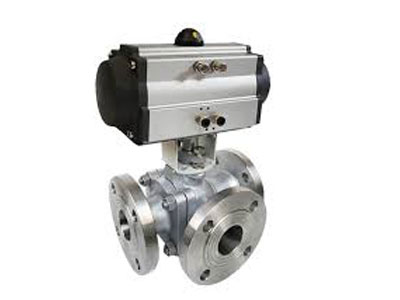What Is A Two-Way Pneumatic Valve?
Key Takeaway
A two-way pneumatic valve is a simple yet essential component in pneumatic systems. It has two ports: an inlet and an outlet, which control the flow of air into or out of the system. This valve can be either normally open (allowing air flow by default) or normally closed (blocking air flow when not activated).
When the valve is activated, an actuator moves the valve mechanism to open or close the path between the ports. This action either allows or prevents the flow of air, making it useful for on-off control in various industrial applications. Two-way pneumatic valves are commonly used to isolate or connect different parts of a system, making them fundamental for managing air flow in automated machinery and equipment.
Key Features of Two-Way Pneumatic Valves
Two-way valves are designed with simplicity and functionality in mind. They typically have a robust body made from materials like brass, stainless steel, or aluminum, ensuring durability and corrosion resistance.
The valve’s two ports—inlet and outlet—are controlled by a movable mechanism like a spool or diaphragm, which either allows or restricts airflow. Some models feature manual, electric, or pneumatic actuation for added versatility.
Seals within the valve prevent air leaks, maintaining system efficiency. Their compact size and minimal moving parts make them ideal for high-pressure environments and demanding industrial applications.

Operating Mechanism of Two-Way Valves
The operation of a two-way valve is straightforward. In its normally closed configuration, the valve blocks airflow until it is actuated, opening the pathway for compressed air. In a normally open configuration, air flows freely until the valve is actuated to stop the flow.
When actuated, the internal mechanism moves to open or close the valve, allowing air to pass through or be blocked as needed. This simple mechanism ensures quick and efficient control, making these valves highly reliable.
Their ability to operate under high pressure and manage airflow precisely is what makes two-way valves indispensable in industrial automation and pneumatic systems.
Applications of Two-Way Valves in Industrial Systems
Two-way pneumatic valves are versatile and widely used across industries. In manufacturing, they control air supply to actuators, ensuring precise movement in automated systems.
In automotive applications, these valves play a role in controlling air brakes and tire inflation systems. Similarly, in the pharmaceutical and food processing sectors, they regulate air pressure in cleanroom environments and packaging systems.
Their simplicity and reliability make them a go-to choice for HVAC systems, where they help manage airflow in heating, cooling, and ventilation setups. Their adaptability ensures seamless integration into various pneumatic systems.
Benefits of Two-Way Pneumatic Valves in Automation
1. Cost-Effective: Their simple design reduces manufacturing and maintenance costs.
2. Compact Design: Ideal for installations with limited space.
3. Reliable Operation: With minimal moving parts, these valves offer consistent performance.
4. Energy Efficiency: Efficiently controls airflow, reducing energy waste.
5. Versatility: Suitable for diverse industries and pneumatic systems.
These benefits make two-way valves an integral part of automation systems, offering unmatched reliability and performance.
Maintenance and Troubleshooting Tips for Two-Way Valves
Proper maintenance ensures the longevity and efficiency of two-way valves. Regular inspections are crucial to identify wear and tear on seals and internal components.
If air leaks occur, check for worn-out seals and replace them promptly. Clogged ports can affect valve operation, so clean them regularly to ensure smooth airflow. Applying appropriate lubrication prevents sticking and enhances performance.
For troubleshooting, monitor air pressure levels and ensure proper alignment during installation. A proactive maintenance schedule can minimize downtime and keep the valve functioning optimally.
Conclusion
Two-way pneumatic valves are fundamental to efficient air system management, offering precision, reliability, and adaptability. Their simple yet robust design ensures seamless operation across a wide range of applications.
By understanding their features, working principles, and maintenance needs, engineers can maximize their effectiveness in industrial automation, improving productivity and system efficiency. Two-way valves remain an essential component in advancing industrial processes.

